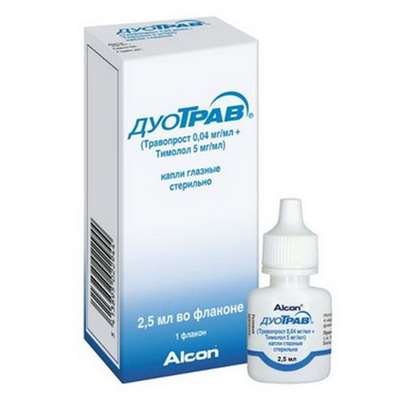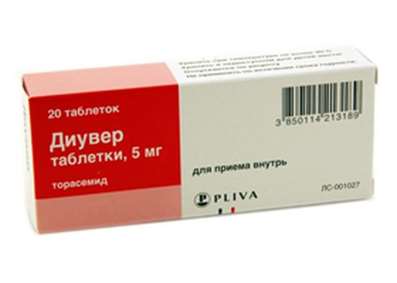Instruction for use: Actilyse
I want this, give me price
Dosage form: Lyophilizate for the preparation of a solution for infusions
Active substance: Alteplasum
ATX
B01AD02 Alteplase
Pharmacological group
Fibrinolytics
Nosological classification (ICD-10)
I21 Acute myocardial infarction: Myocardial infarction in the acute phase; Acute Myocardial Infarction; Myocardial infarction with pathologic Q wave and without; Myocardial infarction complicated by cardiogenic shock; Infarction left ventricular; Transmural myocardial infarction; Myocardial infarction netransmuralny (subendocardial); Netransmuralny myocardial infarction; Subendocardial myocardial infarction; The acute phase of myocardial infarction; Acute myocardial infarction;Sub-acute phase of myocardial infarction; Subacute phase of myocardial infarction; Thrombosis of the coronary arteries (the arteries); Threatened myocardial infarction; Myocardial infarction without Q wave
I74 Embolism and arterial thrombosis: Thrombosis of effort (stress); Arterial thrombosis; Arteriothrombosis; Subacute and chronic arterial thrombosis; Subacute thrombosis of peripheral arteries; Postoperative thrombosis; Vascular thrombosis; Vascular embolism; Thrombosis of aortocoronary shunt; Arterial thrombosis; Thrombosis of arteries; Coronary artery thrombosis; Coronary thrombosis; Thrombosis of blood vessels; Thrombosis with ischemic stroke; Thrombosis with general surgical operations; Thrombosis in Oncology Operations; Vascular thrombosis; Thrombus formation in the postoperative period; Thrombotic complications; Thromboembolic diseases; Thromboembolic syndrome; Thromboembolic complication in the postoperative period; Thromboembolism of arteries; Partial vascular thrombosis; Embolism; Embolism of arteries
Composition and release form
Powder lyophilized for the preparation of solution for infusion - 1 fl.
Alteplase1 50 mg
Auxiliary substances: L-arginine - 1742 mg; Phosphoric acid 536 mg; Polysorbate 802 - <5 mg
1 ml of solution after dilution3
Alteplase 1 mg
Auxiliary substances: L-arginine - 34.84 mg; Phosphoric acid 10.72 mg; Polysorbate 802 - <0.1 mg
1 - specific activity of alteplase 580 IU / mg. This corresponds to the second international WHO standard for TAP (tissue plasminogen activator). The specific activity of alteplase varies in different batches from 522 to 696 IU / mg.
2 - in different batches the amount of polysorbate 80 may be different, but in 1 ml of diluted drug it should not be more than 0.1 mg
3 - diluted in 50 ml of water for injection, the pH of this solution: 7.3 ± 0.5
In bottles of sterile glass with a volume of 50 ml, complete with a solvent (water for injection) in 50 ml vials; In the box 1 set.
Pharmachologic effect
Mode of action - Thrombolytic.
Pharmacodynamics
With iv injection, alteplase is relatively inactive in the blood. Activated by binding to fibrin and inducing the conversion of plasminogen to plasmin, promoting the dissolution of the fibrin clot.
Pharmacokinetics
After intravenous administration is rapidly distributed. T1 / 2 alpha - 4-5 minutes, i.e. After 20 minutes, less than 10% of the initial amount of the drug remains in the plasma. T1 / 2 beta of the remaining quantity in the depot - 40 min. Metabolized mainly in the liver (Cl plasma 550-680 ml / min).
Indications of Actilyse
Acute myocardial infarction (first 6-12 hours), acute massive pulmonary embolism.
Contraindications
Hemorrhagic diathesis, simultaneous reception of indirect anticoagulants, internal bleeding (including recently transferred), cerebral circulation (including a 6-month history), neoplasms with an increased risk of bleeding, aneurysms and vascular malformations, intracranial or spinal Surgical interventions for 2 preceding months, hemorrhagic retinopathy, up to 10 days after severe trauma, traumatic open heart massage, extensive surgical operations, childbirth, vascular puncture In low pressure, incl. subclavian and jugular vein, severe uncontrolled hypertension, bacterial endocarditis, pericarditis, acute pancreatitis, gastric ulcer and duodenal ulcers during 3 months after acute liver failure, cirrhosis, portal hypertension, accompanied by esophageal varices, active hepatitis.
Relative: minor injuries in a recent medical history: biopsy, vascular puncture, intravenous injections, cardiac massage, other conditions accompanied by a risk of bleeding.
Application of pregnancy and breastfeeding
Perhaps, if the expected effect of therapy exceeds the potential risk to the fetus (experience with pregnancy and breastfeeding is limited).
Side effects
Bleeding: external (from the site of the puncture, damaged vessels, nose, gums) and internal (in the gastrointestinal tract, genitourinary tract, retroperitoneal space, CNS, including intracranial (1%), parenchymal organs); Arrhythmia (with successful recanalization of coronary arteries in patients with acute myocardial infarction), extremely rarely - cholesterol or thrombotic embolism, incl. Kidneys with development of renal failure, nausea, vomiting and lowering blood pressure (may be symptoms of myocardial infarction).
Interaction
The risk of bleeding increases with the simultaneous use of coumarin derivatives, antiplatelet agents, heparin, and other drugs that inhibit blood clotting.
Dosing and Administration
IV. The contents of the vial are dissolved in water for injection to a concentration of 1 mg / ml (the resulting solution can be further diluted with a sterile 0.9% saline solution down to a minimum concentration of 0.2 mg / ml).
With myocardial infarction for up to 6 hours after the onset of symptoms, patients with a body weight of more than 65 kg have 15 mg IV infusions, then 50 mg as infusions in 30 minutes and further 35 mg for 1 hour until a total dose of 100 mg is reached. In the appointment 6-12 hours after the onset of symptoms - 10 mg IV in struyno, then as an infusion of 50 mg for the first 60 minutes and then 10 mg every 30 minutes to a total dose of 100 mg for 3 hours. In patients with Body weight less than 65 kg, the total dose should not exceed 1.5 mg / kg. Auxiliary therapy - the appointment of acetylsalicylic acid (as soon as possible and during the first months after myocardial infarction) and heparin (for 24 hours or longer) - it is recommended that a jet infusion in a dose of 5000 units and then infuzionno in a mode of 1000 U / h. Treatment is carried out under the control of activated partial thromboplastin time (APTT), which should not exceed the original by more than 1.5-2.5 times.
For pulmonary embolism: 10 mg IV for 1 to 2 minutes and 90 mg for infusion within 2 hours, until a total dose of 100 mg is reached. The total dose with a body weight of less than 65 kg should not exceed 1.5 mg / kg. Auxiliary therapy: if APTT is less than 2 times that of Actilease, then heparin should be prescribed or continued treatment (under the control of APTT, which should not exceed the original one by more than 1.5-2.5 times).
Overdose
Symptoms: hemorrhagic complications - bleeding external and internal (from the gastrointestinal tract, genito-urinary and parenchymal organs, in the retroperitoneal space and the central nervous system).
Treatment. In most cases, it may be sufficient to wait physiologically for these factors to recover after discontinuing therapy with Actilease, which is due to a short T1 / 2 drug. For serious bleeding - the introduction of freshly frozen plasma or whole fresh blood, plasma-substituting solutions, if necessary - the appointment of synthetic antifibrinolytic agents.
Precautionary measures
It should be borne in mind that doses exceeding 100 mg increase the risk of intracranial hemorrhage. Experience with children is limited. In case of an anaphylactic reaction, stop the infusion and start symptomatic therapy.
Special instructions
Actylysis cannot be mixed with other drugs (even with heparin) in a common vial for infusions, or in a general catheter.
Manufacturer
Boehringer Ingelheim Pharma GmbH & Co. KG. KG, Germany.
Storage conditions of the drug Actilyse
In the dark place at a temperature below 25 ° C. The prepared solution is kept in the refrigerator for up to 24 hours, at a temperature not higher than 25 ° C, up to 8 hours.
Keep out of the reach of children.
The shelf life of the drug Actilyse
3 years.
Do not use beyond the expiration date printed on the package.

 Cart
Cart





